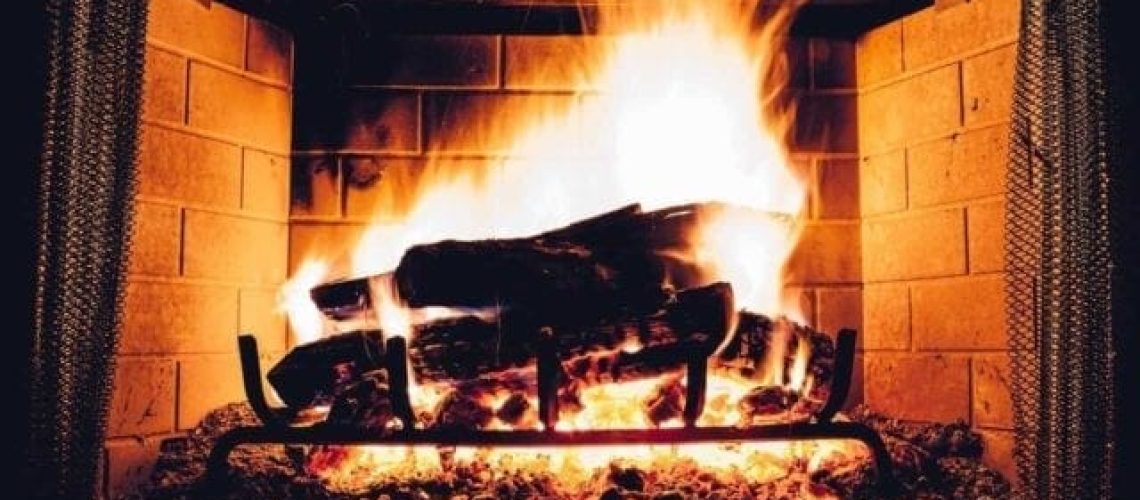The crackling warmth of a fireplace can be a comforting feature in any home, but behind the charm lies a critical element that demands attention: the chimney and fireplace system. Home inspectors, armed with a discerning eye for safety, play a pivotal role in uncovering potential hazards associated with fireplaces and chimneys. In this comprehensive guide, we will explore the most common safety issues that home inspectors frequently discover, shedding light on the importance of addressing these concerns for a secure and enjoyable home.
1. Creosote Buildup
Issue: Accumulation of Creosote in the Chimney
One of the most prevalent safety issues discovered by home inspectors is the buildup of creosote in the chimney. Creosote is a byproduct of burning wood, and when it accumulates in the chimney, it can pose a serious fire hazard. Creosote is highly flammable, and if not regularly cleaned, it can ignite, leading to a chimney fire.
Why It Matters:
Chimney fires can cause extensive damage to the chimney structure and may even spread to the surrounding areas. Regular chimney cleaning is crucial to remove creosote buildup and prevent the risk of chimney fires.
2. Damaged Flue Liners
Issue: Cracks or Deterioration in the Flue Liner
The flue liner in the chimney plays a vital role in directing smoke and gases out of the home. Home inspectors often discover issues such as cracks or deterioration in the flue liner. A damaged flue liner can allow heat to penetrate the surrounding structure, increasing the risk of a house fire.
Why It Matters:
A compromised flue liner can lead to structural damage, pose a fire hazard, and allow harmful gases like carbon monoxide to enter the home. Repairing or replacing damaged flue liners is essential for the safety and functionality of the chimney.
3. Inadequate Ventilation
Issue: Poor Draft, Inadequate Ventilation, or Blocked Chimney Cap
Proper ventilation is crucial for the efficient and safe operation of a fireplace. Home inspectors often identify issues such as poor draft, inadequate ventilation, or a blocked chimney cap. These issues can result in smoke backing up into the home, causing air quality problems and increasing the risk of carbon monoxide exposure.
Why It Matters:
Inadequate ventilation can lead to smoke-related health issues and pose a risk of carbon monoxide poisoning. Ensuring proper draft and ventilation is essential for the safe use of the fireplace.
4. Missing or Damaged Chimney Caps
Issue: Absence of Chimney Caps or Caps in Poor Condition
Chimney caps serve as protective covers for the top of the chimney, preventing rain, debris, and animals from entering. Home inspectors often discover missing or damaged chimney caps, leaving the chimney vulnerable to the elements and unwanted intruders.
Why It Matters:
A missing or damaged chimney cap can lead to water damage, blockages, and nesting of animals. Installing or repairing chimney caps is a simple yet effective measure to protect the chimney and maintain its safety.
5. Structural Issues
Issue: Cracks or Deterioration in the Chimney Structure
The overall structural integrity of the chimney is crucial for its safety and stability. Home inspectors frequently uncover issues such as cracks or deterioration in the chimney structure. These issues may result from exposure to weather elements, age, or lack of proper maintenance.
Why It Matters:
Structural issues in the chimney can lead to instability, posing a risk of collapse. Addressing cracks or deterioration promptly is essential for maintaining a safe and functional chimney.
6. Improper Installation of Fireplace Inserts
Issue: Incorrect Installation of Fireplace Inserts or Stoves
Fireplace inserts and stoves are popular additions for enhancing heating efficiency, but when improperly installed, they can become safety hazards. Home inspectors often identify issues such as incorrect clearances, improper venting, or inadequate installation of fireplace inserts or stoves.
Why It Matters:
Improper installation of inserts or stoves can lead to fire hazards, inadequate combustion, and the release of harmful gases. Following manufacturer guidelines and ensuring professional installation is essential for the safe use of these appliances.
7. Combustible Materials Too Close to the Fireplace
Issue: Inadequate Clearance of Combustible Materials
The area around the fireplace requires proper clearance from combustible materials to prevent the risk of fire. Home inspectors frequently discover situations where furniture, curtains, or other flammable items are placed too close to the fireplace, increasing the risk of ignition.
Why It Matters:
Inadequate clearance can lead to fires, resulting in property damage and potential harm to occupants. Ensuring proper clearance around the fireplace is crucial for preventing accidents and maintaining a safe living environment.
8. Unlined or Improperly Sized Chimneys
Issue: Chimneys Without Liners or Chimneys with Inadequate Sizing
Chimney liners play a crucial role in protecting the chimney walls and facilitating proper draft. Home inspectors often encounter chimneys without liners or chimneys with liners that are improperly sized for the appliance. This can lead to increased heat transfer to the chimney structure and an elevated risk of fire.
Why It Matters:
Unlined or improperly sized chimneys can pose fire hazards and compromise the structural integrity of the chimney. Installing the appropriate chimney liners is essential for ensuring safe and efficient fireplace operation.
9. Cracked or Broken Firebricks
Issue: Deterioration of Firebricks Inside the Fireplace
The firebricks inside the fireplace create a protective barrier that withstands the intense heat produced during combustion. Home inspectors frequently find cracked or broken firebricks, indicating wear and tear over time.
Why It Matters:
Deteriorated firebricks can expose the surrounding structure to excessive heat, increasing the risk of fire. Replacing damaged firebricks is essential for maintaining the safety and longevity of the fireplace.
10. Lack of Spark Arrestor
Issue: Missing or Inadequate Spark Arrestors in Chimneys
Spark arrestors are devices installed at the top of chimneys to prevent sparks and embers from escaping and potentially causing a fire. Home inspectors often identify situations where spark arrestors are missing or inadequately installed.
Why It Matters:
The lack of a spark arrestor can lead to sparks escaping the chimney, posing a fire risk to the surrounding area. Installing or repairing spark arrestors is crucial for preventing outdoor fires and maintaining the safety of the chimney.
Conclusion
Fireplaces and chimneys add a cozy and traditional
touch to homes, but their safety should never be taken for granted. Home inspectors, through their thorough examinations, play a crucial role in uncovering potential hazards that, if left unaddressed, could compromise the safety of occupants and the integrity of the home. From creosote buildup to structural issues, addressing these common safety concerns is essential for enjoying the warmth and ambiance of a fireplace without sacrificing the well-being of your home. In the world of home safety, a proactive approach ensures that the hearth remains a source of comfort and not a potential hazard.
To learn more about the most common safety issues discovered by home inspectors, check out our article “Safeguarding Homes: Common Safety Issues Uncovered by Home Inspectors“.


